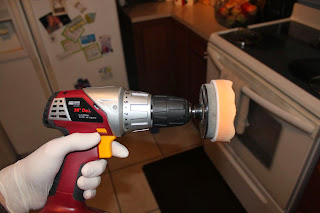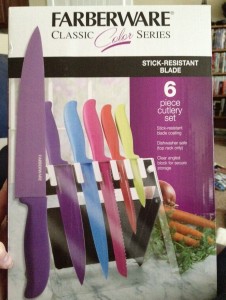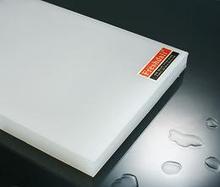Hmmm. Someone is sure hitting the ice hard this weekend, and the icemaker can't seem to keep up. Our family owns an iced tea brewing machine, and we load the glasses to the rim on a regular basis. And bourbon, well, if you've read any post on the blog, you already know about that. The ice level kept getting lower all weekend, and Monday morning, it was gone. What's Big B to do in this situation? Easy. I created a cardboard sign, stood on the street corner, and begged for ice while the neighbors drove by. After a few honks, pointing, and laughter, I got out some tools.

We own a Whirlpool Gold side-by-side refrigerator and absolutely love it. About ten years ago, the Lowe's salesman told us that the "Gold" model is built so tough that you can lift it off the ground by the doors (he did this in the store). The ice bucket is removable (handy), the shelves will contain 12 ounces of liquid (also handy), and the layout is super convenient. Was I ready for a new refrigerator? No way.
The first thing was to run a few tests:
- Check icemaker for "stuck" ice: Nope. This actually happened a couple of times and clearing the ice out fixed the issue.
- Check power plug going to icemaker wiring harness with multimeter: Good.
- Water supply: Good
- Ice Bucket Sensor: Good. When you put your finger in front of the "electric eye" the light would blink twice. That had to mean something.
All those things passed, and the refrigerator would not even fill the ice tray up with water. After a little digging and a cold beverage, a hail Mary was thrown. I didn't have a clue what was wrong, but I knew that a few things were
not wrong.
Amazon has been starting to get more business after the Prime subscription. A good deal of research revealed that almost every refrigerator in the US is manufactured with one of about 3 different icemakers. The one in mine fits in at least a dozen models. After a few clicks, a new OEM icemaker was headed my way for $90. They had an aftermarket icemaker for half the price, but the reviews were not all that hot. Additionally, people seemed to say that icemakers go bad in about 10 years or so (the exact age of mine). After 2 more days of begging for ice (thanks Mom), the new one showed up.
 |
| New OEM icemaker |
 |
| Icemaker installed |
Install for this model was a breeze. To take out the old one, remove the cover (no tools), slide out the old icemaker, pop the power plug, reattach plug to new icemaker, slide in, and you're done. The plug was a little stuck on removal, so the only tool necessary was a #2 flathead screwdriver. Install was the reverse, and I was done in 15 minutes. Soon after, the sound of ice dropping was music to my ears. That lasted for about 3 days, and the begging started again.
Arrggghhhh. The water dispenser was leaking. Not too bad, just a steady drip that was bad enough to shut off the water supply to the refrigerator. After taking apart the door, I noticed that the water tube was pretty dumb. The door had no valve to be seen, so the dispenser must trigger a valve someplace else. Taking another guess, a water inlet valve was heading my way for $50, this time with 1 day shipping. This part would also fit on about 500 different refrigerators. Could this part be installed by a home improvement wanna be like me? A couple of YouTube videos had me thinking yes, but it just didn't work out that way.
 |
| Water Inlet Valve |
When I arrived home, the refrigerator was pulled out, and my wife was sitting behind it with a couple of screwdrivers, a small socket wrench, and a razor knife. A smile immediately came to my face. Here are the steps, and install is roughly an hour:
 |
| Here's the location of my water inlet valve |
- Pull refrigerator away from the wall.
- Hopefully, the water supply is already turned off.
- Unplug refrigerator. (you don't want to get fried)
- Unscrew the water line from the old valve
- Take out the bolts from the back of the refrigerator where the water line goes in. On mine, a cardboard cover is on the bottom, and you need to take out about 4 bolts.
- Pull the cover out enough to work on the valve.
- Take out the 2 bolts that hold the valve to the frame
- Remove plastic water lines from the valve (one goes to icemaker, one goes to water)
- Pop out wiring harnesses.
-
Remove the bracket from the old valve, and install on new one
- Use a razor knife to cut a small portion of the plastic water lines off. You want a clean, straight water line to make a good seal.
- Pop the water lines into the valve. This model had quick connect fittings.
- Install is basically the reverse from step 7.
- Check for leaks.
- Check for leaks an hour later.
- Check for leaks before bedtime.
- Check for leaks the next morning. Note: The install is probably good if this step passes.
A couple of words of caution on this blog post that can be applied to almost any home repair.
Number 1, the correct parts for the repairs were not intuitively obvious to me. I took a couple of pretty good guesses and got lucky. That happens sometimes, but it also doesn't happen sometimes. Call in a pro if you don't know what to do. Check
here for another blog post about finding the right contractor. The Maytag repair man works on appliances every day and has seen it all. He can probably hold his ear up to the refrigerator and know the right part. Heck, it may even be in the truck. For me, the risk was low on both parts. Worst case = no ice, no water, and more begging.
Number 2, messing up an install that involves water can be a literal disaster. One of my friends had an issue with his refrigerator, and the thing sent loads of water into his basement. You can save money now, and spend a lot later if you're not careful. Call in a good contractor if the job seems too complex.
After the repairs, hopefully our refrigerator be with us for several more years. The icemaker has even kicked out a tray of ice during the writing of this article. For some reason, that sound makes me smile now.



.jpeg)












































.jpg)



